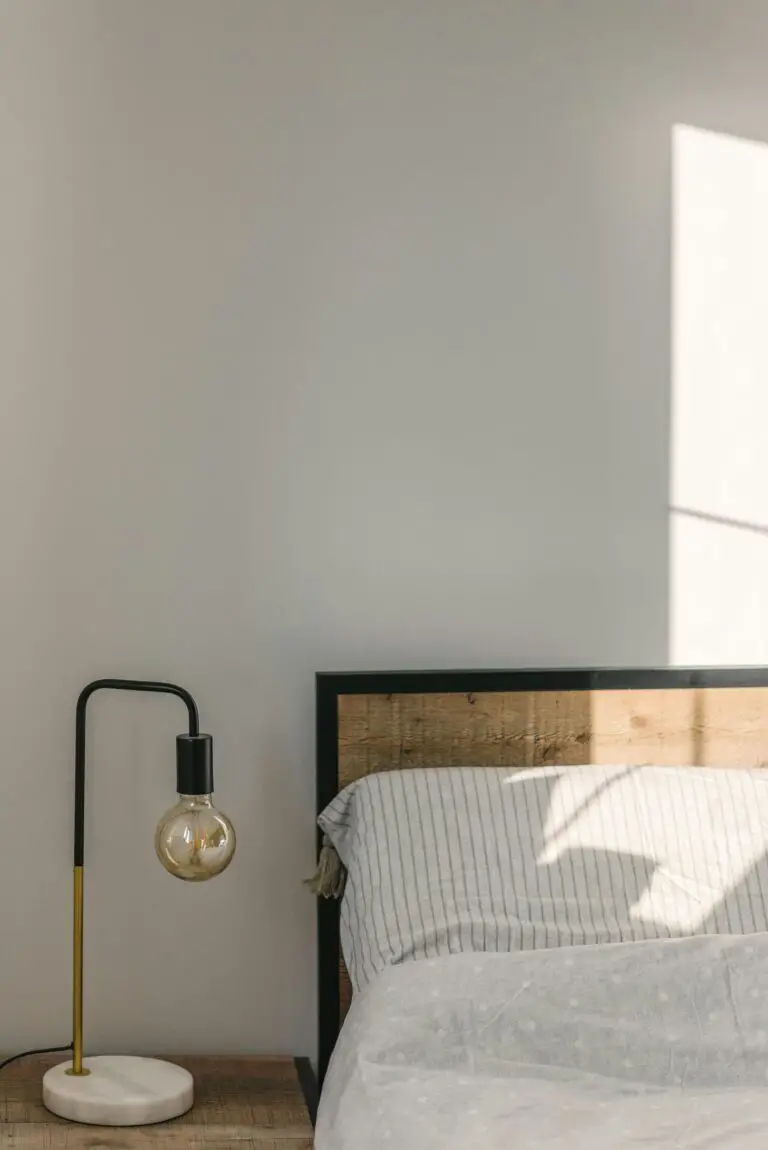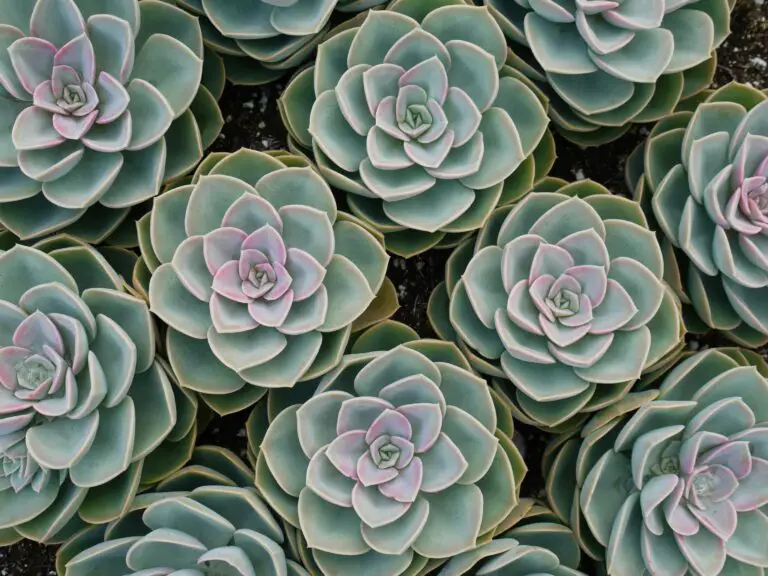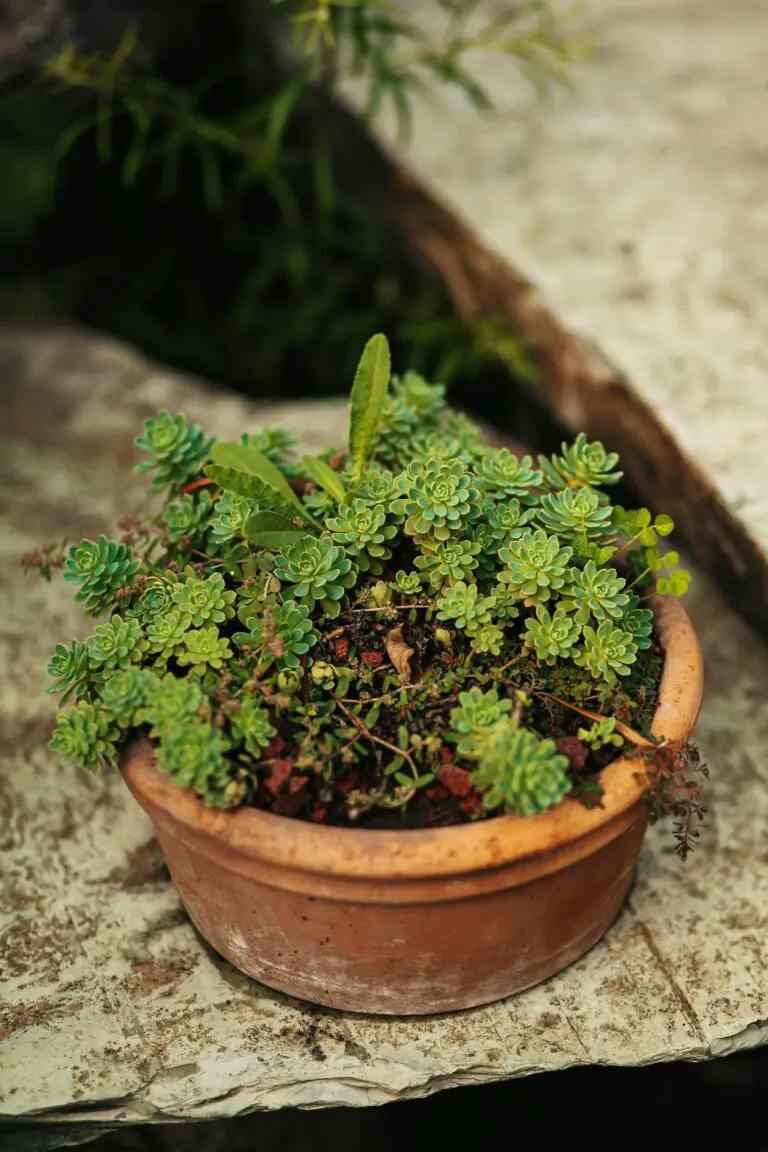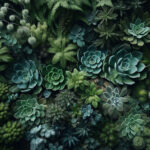Introduction to Sedum
Imagine a plant as resilient as it is charming, a succulent that weathers the storm and yet graces our gardens with vibrant colors and textures. Welcome to the world of sedum, a genus celebrated for its robust nature and minimal care demands. Picture a lush succulent carpet, gleaming under the golden kiss of sunlight—this is the realm where sedum typically thrives. But did you know that some of its kind can also flourish in the dappled light of a cozy backyard corner?
Embarking on our horticultural journey, we uncover varieties of sedum that, contrary to their sun-loving cousins, have a fondness for the shade. These are the unsung heroes of the shaded nook, bringing life to parts of the garden that the sun’s rays rarely caress. Whether peeking out beneath a bristly bush or accenting the base of a towering oak, shade-tolerant sedum varieties exhibit a versatility that endears them to gardeners everywhere.
Experience has taught us that finding the right plant for those less sunny spots can be a challenge. Yet, amidst the sedum spectrum, there exists a palette of options that not only endure but thrive in the shadows. Cast in roles often reserved for other shade dwellers, they provide a textural contrast that is both surprising and delightful. The intrigue they bring to shaded gardens is matched only by their undemanding nature, a hallmark trait of the sedum family.
Sedum’s adaptability doesn’t just stop at sun exposure. Whether you’re dealing with drought conditions, forgetful watering schedules, or even the occasional trampling pet, these succulents prove time and again that they are a match for the realities of life. Take, for instance, the basics of sedum care, where we learn that their easy-going attitude goes hand-in-hand with their ability to withstand various growing conditions.

To grasp the full potential of shade-tolerant sedum, one must appreciate the remarkable diversity found within this genus. From sprawling mats that hug the earth to statuesque species that reach towards the sky, sedum defies a one-size-fits-all description. It is a testament to the wonders of adaptation that within this same botanical family, one can find species perfectly suited for the sun-drenched rockery as well as those that will become stars of the shade garden. The next time you ponder over the perfect addition to your shaded retreat, consider the sedum genus’s lesser-known secret: its ability to prosper even when the sun retreats.
Understanding Shade in Gardening
Think about the word ‘shade’. To many, it evokes images of cool, serene spaces where the scorching sun just can’t reach. In the gardening world, shade isn’t just a respite from the sun, but a nuanced element that directly impacts plant growth. Unearthing the secret life of shaded areas reveals a spectrum ranging from light’s embrace to the veiled darkness of full shade, with partial shade and dappled light occupying the areas in between.
Let’s break it down: Full shade areas see no direct sunlight, think of the north side of a tall building or under a dense canopy of leaves. Partial shade, on the other hand, is like a sun-and-clouds day on repeat, where the sun plays peek-a-boo for about three to six hours. Those plants get a moderate dose of sun, but they’re not out there sunbathing all day. Dappled light is the most playful of all; it’s like sunlight glistening through a lace curtain, offering a light show that changes with the time of day.
Here’s where it gets real—imagine hosting a backyard barbecue in mid-July. You notice that one corner where guests linger without wilting, where the light is gentle, and the heat is just a whisper. That’s the sweet spot for shade-loving plants like certain varieties of sedum. Recognizing the potential of these spots is akin to a gardener’s treasure find. Sensibly selecting and positioning your plants, whether you’re chasing sun or embracing shade, can transform your garden narrative from one of survival to one of verdant luxury.
Contrary to popular belief, “shade” doesn’t necessarily spell gloom for gardens. In fact, it can be a dynamic stage set for growth and blossoming, given the right players, and sedum can indeed be one of those stars. The takeaway here? Understanding the shading script in your garden is half the challenge; the other half is casting the perfect botanical actors to thrive in those plots.
The Best Shade-Loving Sedum Varieties
When it comes to gardening, it’s easy to think that only a select few plants can brave the darker corners of our yards. But fear not, shade-dwellers! Sedum, the plucky hero of the succulent world, isn’t afraid of a little cover. These diverse and hardy beauties are ready to thrive where the sun shyly whispers rather than shouts. Let’s dip into the enchanting world of shade-tolerant sedum varieties that await to green up your gloomier spaces.
Visualize a patch of garden where the sunlight plays peek-a-boo through the branches; this is where the charming ‘Sedum makinoi Ogon’ lights up the shadows with its tiny, golden-yellow leaves. Or picture a serene rockery, its nooks and crannies shaded by proud conifers, now home to the rosette-forming ‘Sedum spathulifolium’, its powdery blue hue whispering tales of cool calmness.

Let’s not overlook ‘Sedum sieboldii’, with its whimsically whorled leaves, dangling like delicate chandeliers from slender stems, ready to sprinkle pale pink flowers into the dusky corners. And for texture that makes you want to reach out and touch, the fuzzy foliage of ‘Sedum dasyphyllum’ offers a tantalizing contrast to smoother leafed companions.
The versatility of sedum doesn’t end with their flowering prowess under the tree canopy. Their adaptability makes them perfect companions for caring for sedum in shade and can be a spotlight in your understory tapestry. Make sure to look out for the vibrant ‘Sedum kamtschaticum’ which dots the semi-shade with bright yellow blooms, or the ground-hugging ‘Sedum ternatum’, with its cascade of white starry flowers.
Behind every thriving sedum lies a story of effortless elegance – their easy-to-care-for nature is a tale sung among seasoned gardeners and a whispered legend to those just starting out. Discover smart strategies to manage your garden, whether you’re cultivating a lush landscape or dabbling in your first green adventure.
As your journey with shade-loving sedum begins, remember that these understated heroes are not just survivors; they’re messengers of hope, proving that even in the dimmest corners, life flourishes. So why not let sedum work its quiet magic and transform your shaded spots into realms of muted wonder?
Caring for Sedum in Shady Areas
When you tuck sedum in a cozy shaded nook, you’re giving it a reprieve from the blazing sun, but how do you ensure it thrives? Caring for these shade-seeking succulents is not an arcane art, but rather, a symphony of simple steps that lead to lush growth.
The Right Soil Mix for Sedum Serenity
Imagine this: a sedum plant, nestled in a bed of perfectly draining soil, avoiding the dreaded soppy feet that could spell doom. You see, these plants may love the shade, but they detest waterlogged roots. Go for a potting mix that’s one part soil, one part sand or gravel. This blend ensures water runs through quickly, leaving the roots cozy and dry.
Mastering the Moisture Balance
Picturing when to water your shaded sedum can sometimes feel like predicting the weather, but it doesn’t have to be! Wait until the top inch of soil feels like a dry summer day before giving your plant a drink. This way, you’re mimicking the natural arid habitats sedum plants adore, even if they’re lounging in the shadows.
General Maintenance: The Sedum Spa Day
Imagine your sedum as a guest at a spa, requiring routine pampering to stay in tip-top shape. Prune back the dead or overgrown parts, which is kind of like a haircut for your plant. This not only maintains aesthetics but also encourages thicker growth, preparing your sedum for its next spotlight moment in your garden.
Below is a video sharing insights on sedum care, including those charming varieties that flourish under a canopy of shade. Take a look for an in-depth tutorial that’ll help you become a sedum savant.
Remember, even in the shade, sedum plants need their fair share of love. Keep an eye out for signs they’re too shaded, such as pale leaves or elongated stems. If that happens, it’s time for a little game of musical chairs to find a spot with a smidge more light—think dappled sunlight rather than full shade.
Ultimately, with the right soil composition, careful watering, and seasonal trimming, your shade-dwelling sedums will not just survive; they will throw a garden party in the shade, standing out with their resilient beauty in the cooler, quieter corners of your sanctuary.
Design Ideas for Shady Garden Spaces with Sedum
Imagine transforming that shaded nook of your garden into a serene paradise, where the lush foliage of shade-tolerant sedum forms a verdant tapestry against the cool backdrop of seclusion. Embracing the shadows doesn’t mean sacrificing vibrant garden life. On the contrary, with a bit of creativity and a selection of the right sedum varieties, your shaded spaces can become as alive and beautiful as any sun-drenched garden.
One brilliant strategy is layering. Consider the varying heights of sedum, from ground-hugging carpets like Sedum ternatum to taller, upright species like Sedum telephium. By layering these, you create a multi-dimensional living mosaic that not only charms the eye but also provides a succession of textures and shades. Evoke the whimsy of a woodland by planting alongside ferns and hostas, whose broad leaves will complement the sedum’s smaller rosettes.
Envisage the elegance of a shade-tolerant sedum border edging a stone pathway, guiding you on a serene journey through your garden’s cooler recesses. Each step you take is accompanied by a whispering rustle of leaves and the soft scent of greenery. Here, sedum acts not just as a plant, but as a living, breathing design element that enhances the overall aesthetic and sensory experience of your garden.

For a touch of innovation, why not create a shady sedum tapestry as a living wall? This vertical garden approach allows you to enjoy sedum’s beauty at eye level, where the intricate patterns of its fleshy leaves become a natural art form. Contrast is key in such designs—pair the soft, rounded shapes of sedum with the fine, feathery fronds of shade-loving ferns to add textural depth and visual interest.
Moreover, consider the practical benefits. Sedum, due to its drought-resistant nature, serves as a resilient inhabitant of shaded areas. No more worrying about delicate shades wilting away—sedum thrives with minimal fuss, adding ease to beauty. By placing these stalwart succulents beneath tree canopies or alongside shaded walls, you create rugged yet enchanting vignettes that demand little but give so much.
And let’s not overlook the potential for ground cover. Lower-growing sedum varieties form lush green blankets that suppress weeds and provide a trouble-free alternative to high-maintenance grasses. Imagine a mat of Sedum spathulifolium caressing the earth beneath a canopy of trees, its succulent leaves shimmering with dew in the morning light, creating an ethereal atmosphere within your personal oasis.
Remember, incorporating shade-tolerant sedum into your garden is not just about planting; it’s about painting with living colors, where each choice you make adds a stroke to the masterpiece that is your tranquil, shaded retreat. Dive into the possibilities, and soon enough, your shaded garden will become a testament to the enduring charm of these versatile, shadow-loving plants.
Potential Challenges and Solutions
Embarking on the journey of cultivating sedum that does well in shaded areas can be reminiscent of wandering through an enchanting forest – there’s beauty in the understory! However, gardening in the shadows does come with a set of unique challenges. Don’t let your sedum become just another folktale of the forest floor; it’s time to shine a light on common issues and carve out solutions for a thriving, shade-loving garden.
Over-Watering Woes
Imagine a dense canopy above, with raindrops navigating through the leaves, taking their time to reach the earth. In such settings, over-watering becomes a tantalizing trap for shade-gardeners. Sedum, accustomed to draining slopes and rocky outcrops, may find itself in soggier scenarios than it prefers. Take a cue from nature and ensure your shaded sedum isn’t drowning in good intentions. The trick is to mimic a natural water cycle, allowing for the earth to absorb moisture before offering another drink. A telltale sign of over-watering is a sedum that’s more limp than a lullaby!
Battling Pests in the Penumbra
No need for a magnifying glass to see that shade often invites uninvited guests – from mealybugs masquerading in the mulch to aphids aphrodisiac’ing on your succulents. These critters find comfort in the cooler, humid environment created by shade, setting up their own silent disco on the delicate leaves of your sedum. Keep a vigil, for these minuscule marauders are thwarted with regular patrols. Encourage natural predators like ladybugs or lacewings, or if need be, a mild, environmentally friendly soap solution can evict these pests with an assertive suds-slaying.
Diminishing Growth: A Shady Dilemma
Your sedum may stretch out, seeking sunlight, like a cat in a sunbeam. Indeed, too much shade can stunt your green companion, leading to spindly stems rather than the plush carpet of foliage desired. Start by choosing varieties that are known shade-tolerants – they’re the Robin Hoods of the plant world, thriving where the light is low. Trim back any overzealous trees or shrubs blocking your sedum’s limited light, and think about reflective mulches or nearby surfaces to give them a little more of what they yearn for.
Addressing these potential challenges can transform a dimly lit patch into an oasis for shade-tolerant sedum. Observing, adapting, and working with the unique rhythm of your garden’s shaded ballet will lead to a harmonious chorus of healthy, flourishing sedum. It may take some patience, some learning, and even a bit of luck, but as any seasoned gardener will tell you, the most enchanting gardens are the ones grown with knowledge and care.

Frequently Asked Questions
For those of you who are curious about which sedum does well in shade, you’ve likely stumbled upon the perfect spot in your garden where the sunlight shyly waves its hand, only to find the plant choices somewhat limiting. But here’s some enlightening news—certain sedums are not only willing but thrilled to snuggle up in those dimmer corners. Let’s dig into some of the most common questions asked by shade-garden enthusiasts and unearth the secrets to shade-tolerant sedum success.
Can Sedum Survive in Low Light Conditions?
Yes, while sedum is often associated with their love for basking in the sun, certain varieties are exceptions to this rule. Take, for instance, Sedum ternatum, commonly known as Woodland Stonecrop. It embraces the dappled light of woodland settings with open arms. Picture a lush, green carpet delicately laid under a canopy of trees – that’s your sedum thriving in the softer light.
Which Sedum Varieties Are Best for Shady Areas?
Enthusiasts often ask, “what sedum does well in shade?” Beyond the Woodland Stonecrop, the Sedum sieboldii offers a palette of pastel blooms even in low light. Then there’s Sedum hybridum ‘Immergrunchen’, a resilient little crusader that stands up to the shadiest challenges. Imagine your once-lonely shade spot now speckled with their vivid colors. These are real-life testimonies of nature’s adaptability, showcasing that shadowed nooks in your garden can indeed burst with life.
For a practical visual example, let’s peek at a video that sheds light on the resiliency and care of these adaptable sedum varieties.
How Do You Care for Shade-Loving Sedum?
Maintaining a shade-loving sedum isn’t vastly different from its sun-loving cousins. Adequate watering during dry spells, a trim post-flowering, and a mindful eye for overcrowding—these simple acts of care go a long way. But remember, every variety has its quirk. While the need for water is less in shaded areas, ensure your sedum isn’t sitting in soggy despair. Proper drainage is the silent guardian of their root wellbeing.
Will Sedum in Shade Flower as Much as in Sun?
It’s a fair concern—will my shade-planted sedum give me the joyous blooms akin to their sun-drenched counterparts? It’ll be remiss to say they match the floral abundance, but you’ll witness a showcase of perseverance. Flowers might be fewer, but in their own unhurried way, they arrive to cheer up the green foliage. A subtle reminder that beauty in the garden isn’t a race—it’s a rhythm.
Embarking on the sedum-shade journey brings with it a bundle of learning and observations. Witnessing your shade-tolerant sedum varieties not only survive but flourish is a chapter in gardening that fills hearts with an understated pride. Rolling out the green carpet in areas kissed by the occasional sunbeam becomes a story worth sharing, from one shade gardener to another.


